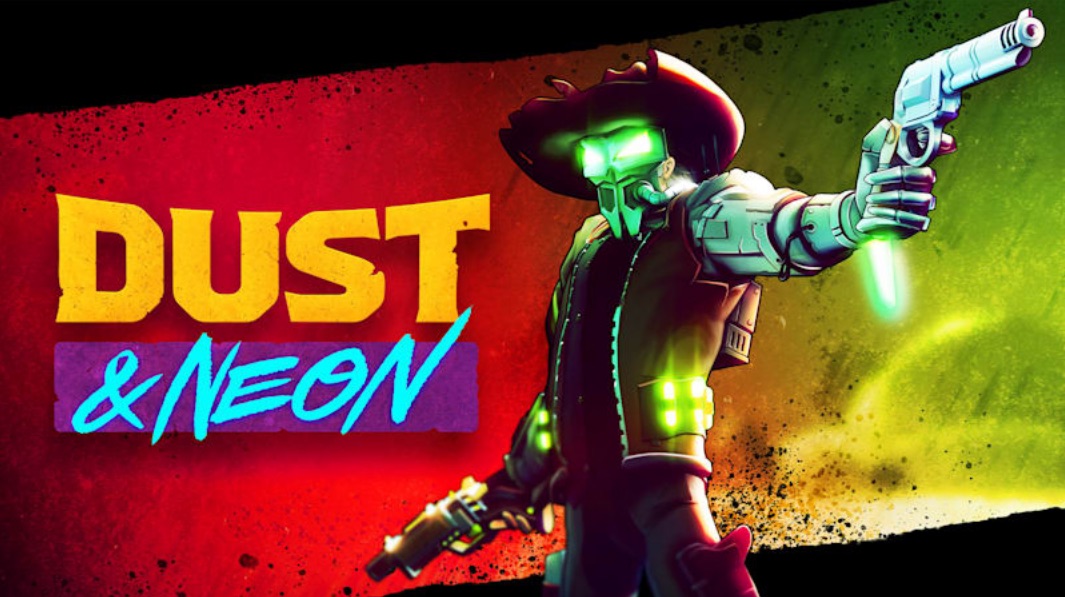The wild west is a sorely unrepresented genre in video games. The best any western enthusiast can hope for is genre-blending and Dust & Neon delivers a mix of cyber+desert punk aesthetics. The result is evocative of The Borderlands games, but far less obnoxious and has a lot more robots.
Twin-stick shooting and roguelike gameplay are always reliable genres in indie games. Dust & Neon aspires to combine both and has a forgiving punishment system in place so that players can be less stressed over completing a run and focus more on the gunplay and cover mechanics.
Dust & Neon could be a humble sleeper hit. It has an emphasis on tactical twin-stick shooting and a robust character-building system to customize a play style. How do the rogue elements fit into the equation? Is there enough variety to carry the action? Find out in this Dust & Neon review!
Dust & Neon
Developer: David Marquardt Studios
Publisher: Rogue Games Inc.
Platforms: Windows PC, Nintendo Switch (reviewed)
Release Date: February 16, 2022
Players: 1
Price: $29.99 USD
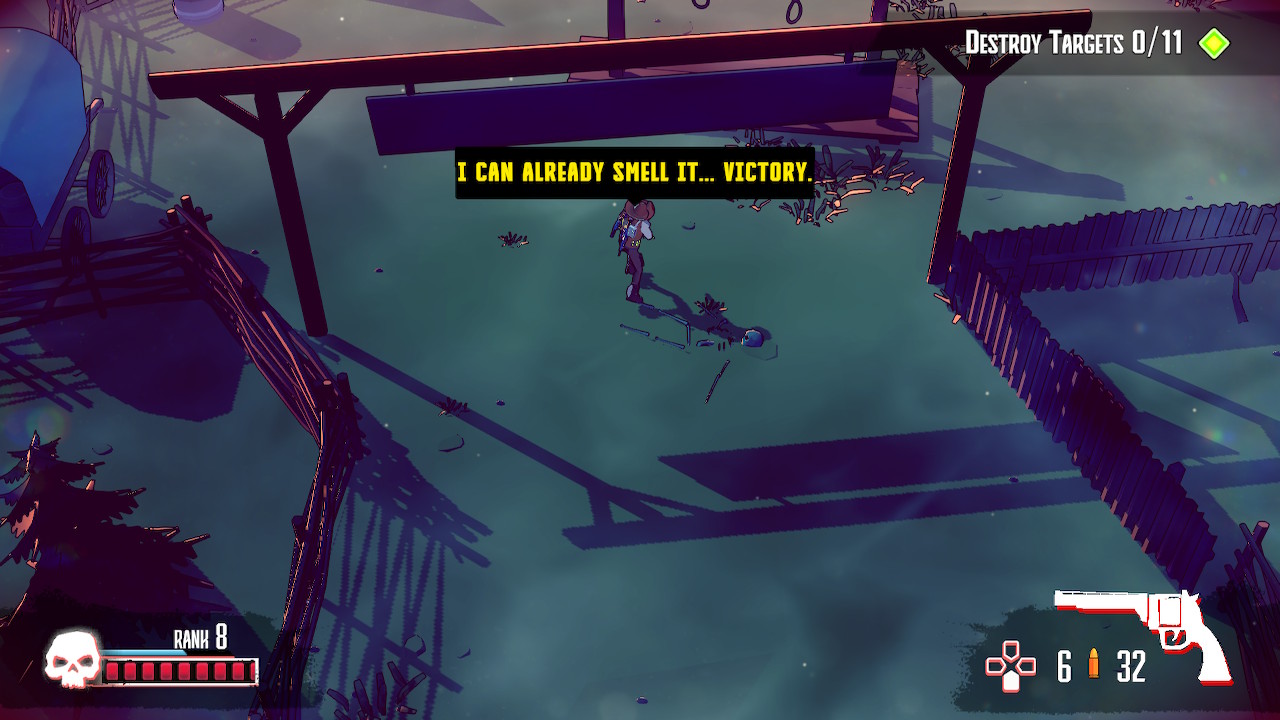
The Nintendo Switch’s specs are withered compared to the competing consoles. This means artists and game devs must get creative and have some ingenuity when it comes to rendering. Dust & Neon aims for a lurid, neon cel-shaded style that makes it look like the kind of art you would have seen on action-figure packing from the 1980s.
Characters and enemies have defined silhouettes and associated color pallets that make them stand out from the busy and often chaotic level geometry. Crucial items are readable and needable- especially since the shootouts with big bounties in Dust & Neon can be as brutal as a bucking bronco.
As a mysterious cybernetic gunslinger, the player is sent out by a loopy scientist to go collect bounties on some rowdy mechanical desperados. The setting is implied to be some kind of post-apocalyptic wasteland where there are almost no humans left, just roaming robots.
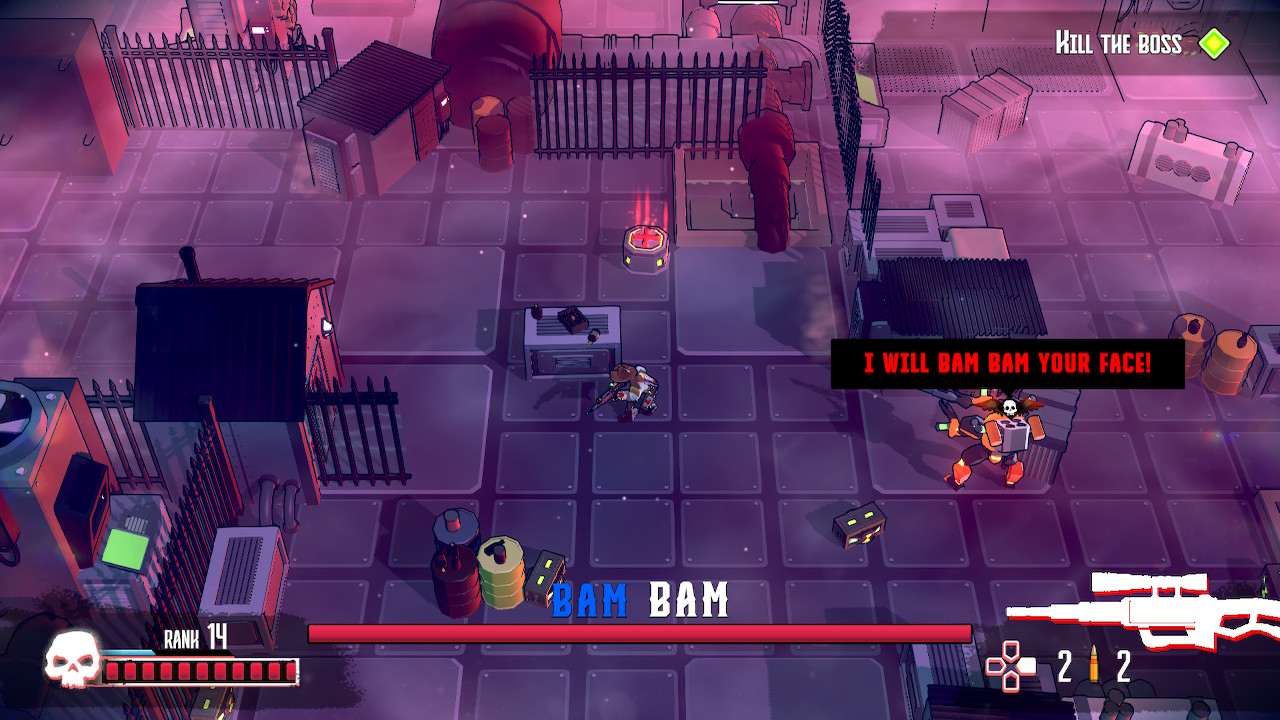
There is not much to Dust & Neon‘s story- not that anyone will care because it is an excuse to justify the grind. The player can’t run up to the boss bounties and try to retire them; each one is gated behind a rank that gamers must reach. To raise the gunslinger’s rank, players will have to play through stages that can have several variations of the same kind of mission.
The missions include having to kill all the enemies, kill specific enemies, find the safe on the train, go blow up some reactors, and so on. Dust & Neon shows a lack of imagination by most of the missions not mattering since the core gameplay is squarely focused on shoot-outs and dodging gunfire. It does not matter what the game wants the player to do, expect to by running, dodging, and blasting robots every time.
Dust & Neon‘s greatest downfall is the lack of variety. The repetitive gameplay makes it only enjoyable in shorter sessions before the dreadful tedium sucks the fun out of the experience. The core experience is easily reduced to running through samey randomized levels and shooting baddies, with only a handful of boss fights to break up the repetition.
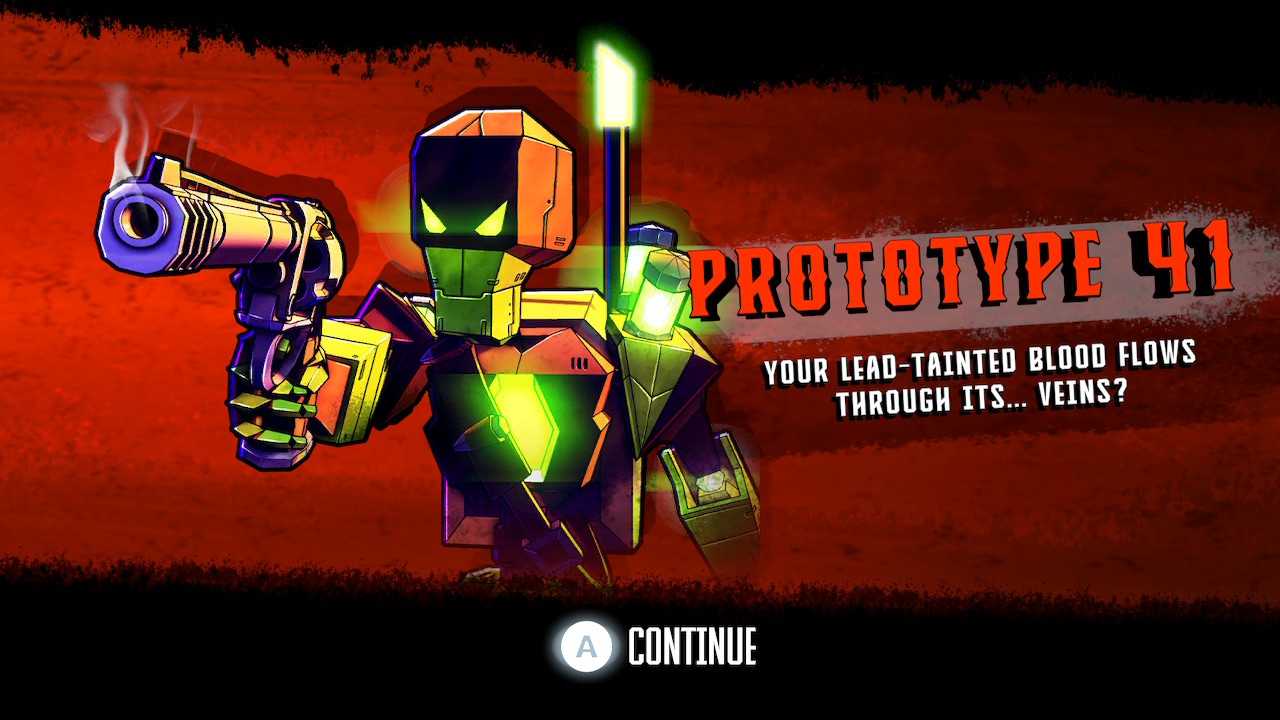
There are only three weapon types and they are all functionally the same due to how the randomization works. It is very possible to acquire a shotgun with a narrow spread and long range. With the appropriate upgrades, this shotgun can replace the functionality of a rifle or a handgun.
This scenario is purely theoretical since every weapon is randomized, but it can happen with any of the three weapon types and it did happen on more than one occasion. Dying is a slap on the wrist, which is unusually forgiving; you barely lose anything and only your weapons are lost. The cash and upgrade cores will pile up no matter how much you die.
Losing all your weapons also does not matter much in Dust & Neon since players will be constantly finding guns all the time and the stat doesn’t feel dramatically different. So long as players upgrade the kiosk that gives away free guns at the lab, there will be hardly any need for the gunshop robot. The money is better spent on cocktails or minblowers for temporary stat boosts.
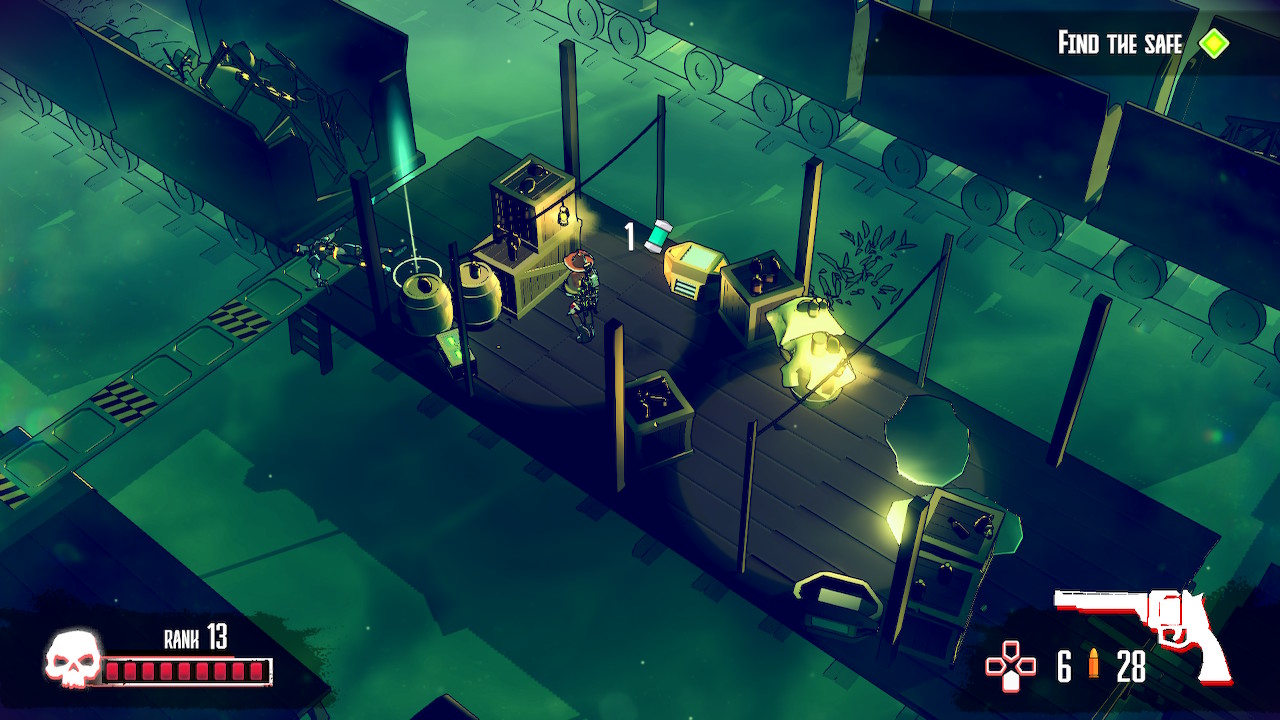
Dust & Neon‘s gameplay is repetitious and simple, but it is not tedious. The playability and sensory feedback from dashing, going into cover, and shooting feel very fluent for a 30fps Switch game. The most defining aspect of Dust & Neon is its reloading system which fetishizes slamming a bullet into a well-greased chamber.
By far the most important stat of any weapon in the game is capacity. In Dust & Neon, every individual bullet and shell has to be loaded into the chamber by tapping a button and this is visually represented on screen with a close-up of the reload animation. This stylistic touch makes Dust & Neon stand out and emphasizes the importance of ammo in this game since running out is a very real possibility.
The gunslinger won’t ever be out of ammo for long. Ammo crates are strewn about like jars of pee in Howard Huhges’ home, but don’t always expect to be able to get some when being overwhelmed by foes coming from all directions. There is a flow to the gun battles and they spike when you least expect it.
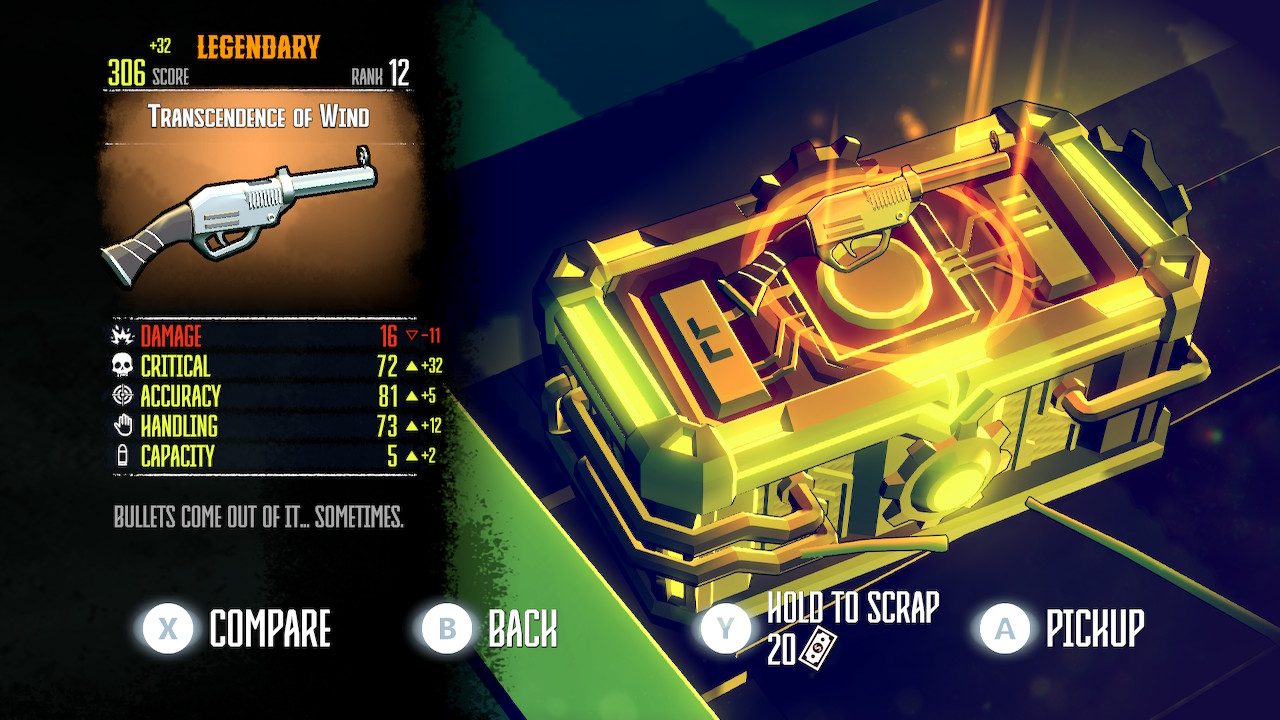
Sadly, there are only two enemy types; humanoid bipedal droids with guns and close-range crawling drones that roll like a tumbleweed in the wind. The rolling enemy types tend to charge the hero and come in larger numbers. They also have a melee attack with a spotty hit range that is much longer reach than it appears which leads to unfair sucker punches.
The randomized levels also do not deliver on the promise of feeling like infinite levels. Every stage, apart from the train stages, look and feels the same. Environments look like a western-themed yardsale with random western crap all over the place, sometimes clipping into each other.
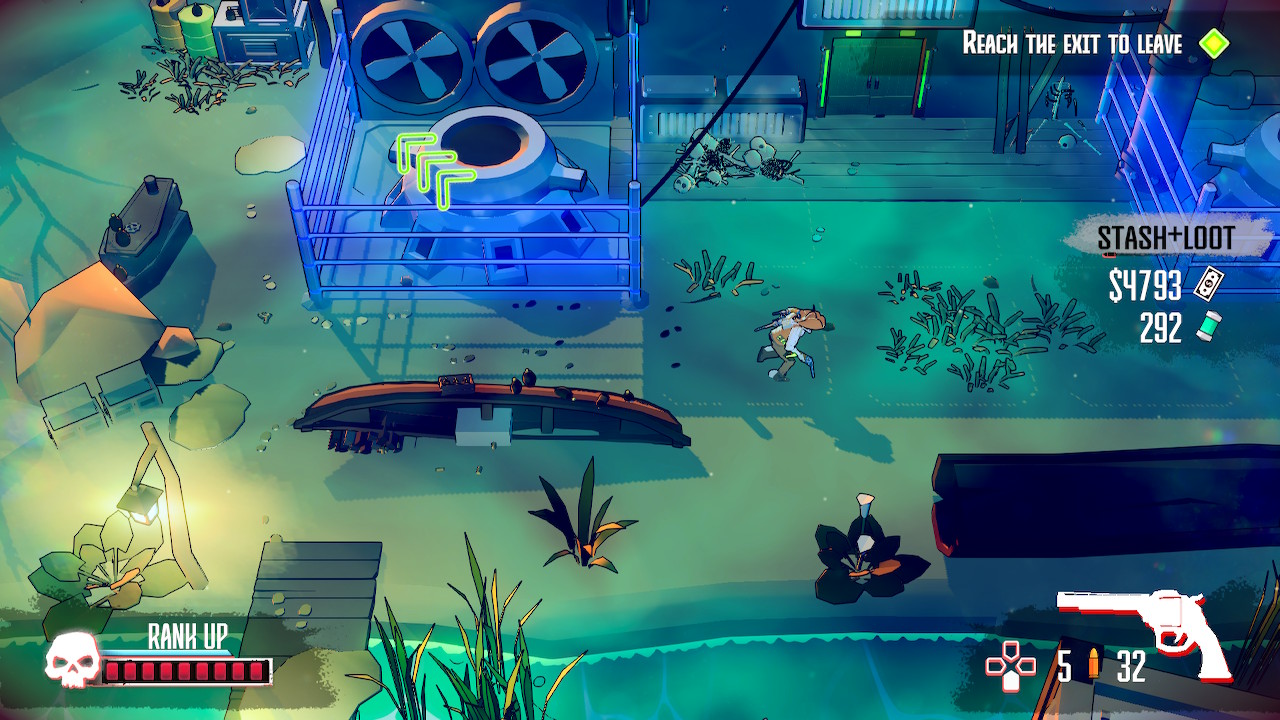
One characteristic that defines westerns is the genre’s distinct music. Sadly, Dust & Neon barely has any and what it has is generic twangy and jaunty guitar riffs. The music needed to be big and over the top with blaring trumpets and passionate acoustic strumming. It needed to go full Ennio Morricone and embrace the romanticism of westerns.
Dust & Neon is a solid action game with a steady difficulty curve and enough tinkering for character building to make an addictive experience. It does not reach the heights of Hades and that is due to the lack of gameplay variety and compelling characters. Despite its obvious shortcomings, Dust & Neon is a worthwhile twin-stick action game that builds upon itself the deeper you go in, but not enough to break up the monotony.
Dust & Neon was reviewed on Nintendo Switch using a copy provided by Rogue Games Inc. You can find additional information about Niche Gamer’s review/ethics policy here. Dust & Neon is now available for PC (via Steam), and Nintendo Switch.
